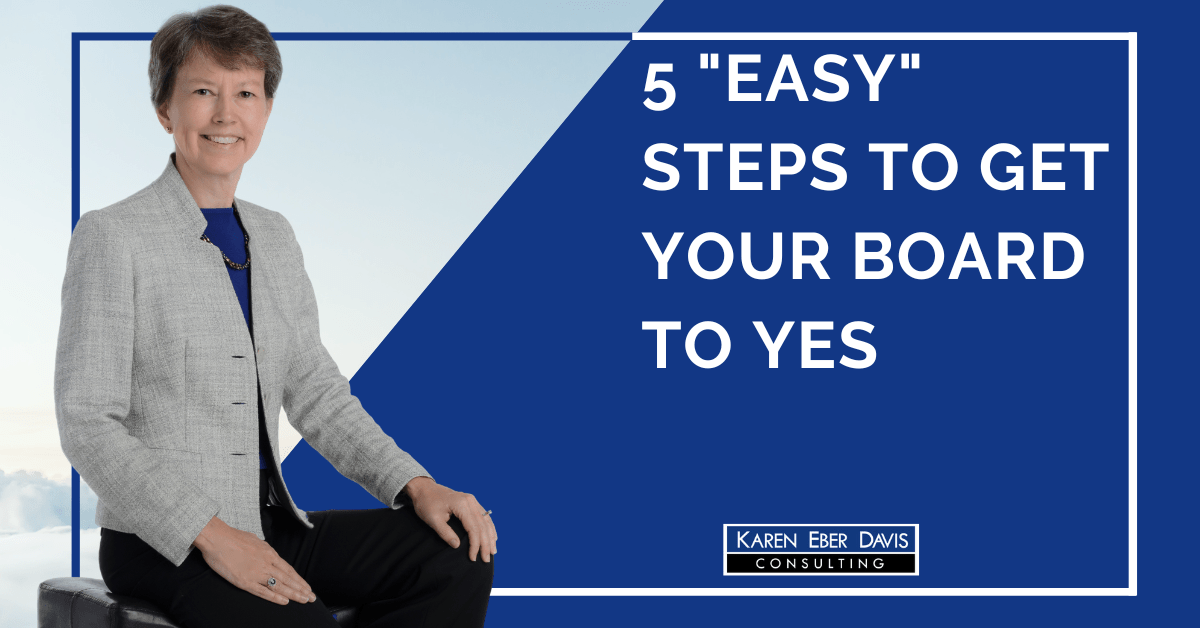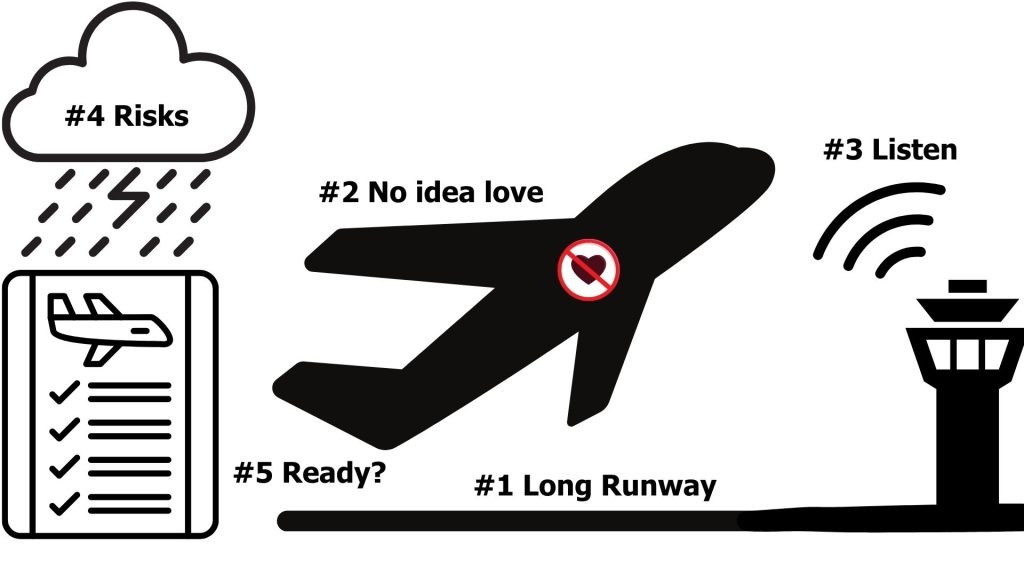
5 “Easy” Steps to Get Your Nonprofit Board to Yes
Whether it’s a raise, strategic planning, or just changing how you’ve always done things, sometimes you need your board to align with you and your proposal. How can you help your board to align with your proposals for the benefit of them, for you, and your nonprofit?
5 “Easy” Steps to Get Your Nonprofit Board to Yes Transcript
Whether it’s a raise for you, strategic planning, or just changing how you’ve always done things, sometimes you want your board to align with you and your proposals. But you know from experience, the most obvious thing in the world to you doesn’t always fly with your board.
So how can you help your board to align with your proposals for the benefit of them, for you, and for your nonprofit?
So we have five steps to have your ideas fly with your board.

① Long Runway
The first is to build a long runway. Boards, as well as even CEOs, don’t like surprises. So you want to drop this in like you’re going to build this thing, and you’re going to let them know it’s coming.
Why is this helpful? And what happens if you don’t do it? When you hear a brand new idea that’s totally out of the blue, usually you’re uncomfortable, and maybe the easiest thing to do is get rid of it, by saying no.
Secondly, even when you had this brilliant idea, probably spent a few minutes or even a few seconds thinking about, ‘Is this really going to work?’ And you’ve played with it. And so you want to get your board back to where they’re hearing about it and letting them play with it.
② Don’t Fall in Love with Ideas
After you’ve built a terrific runway, your next step is to make sure that you do not fall in love with your ideas. This is hard because they our ideas and they’re really attractive. But what you want to do instead is aim to fall in love with the solution.
Your salary is not what it should be. What other solutions are there? Could you take more time off?
For instance, Cheryl was receiving a lot of negative feedback—nothing she really wanted to do the board would not buy. They would not take it when she suggested it.
So we worked together, and when we decided that she should meet with her board members one-on-one. When she did, she discovered that they overall supported her overall direction, but they wanted to have some say in how the board worked together. By listening to them, when she went back to the board, her ideas began to fly.
③ Listen to Every Voice
You are ready for the third step, and that is to listen to every voice. When you listen, you want to hear not only the logic, the wisdom, and the ideas, you want to hear the emotions, and so by doing that, you will get your board on board.
In the book The Five Dysfunctions of a Team, the author said, “When people don’t upload their opinions and feel like they’ve been listened to, they really don’t get on board.”
And you want your board to get on board.
④ Do Risk Analysis and Mitigation
Here’s the fourth thing that you need to consider is what is risk mitigation. Why am I holding this curtain rod? Because things do go bump in the night. Literally, this curtain– this is my blackout curtain, and it fell down in the middle of the night when I wouldn’t pull it together.
So there are risky things that happen. There’s some things that are serious. Curtains falling off the wall it’s not one of them, but not having enough money in your budget is a challenge. So you want to help your board to see that you have considered the risk and mitigated them, especially ones that are serious, and this will get you more buy-in when it comes to your proposals.
⑤ Do You Have the Votes?
Hey, you’re ready for the final step, and that is to make sure your board is ready to actually go with you on this. When Abraham Lincoln put out the Emancipation Proclamation, he waited. His timing was such that he waited until after a Northern victory.
When my former boss with Sarasota County would bring items to the County Commissioners, he would count how many votes he had, and when he had three of the five, we were ready to fly. And, finally, speaking of ready to fly, when you get on that airplane, you hear about “the pilot is completing the takeoff checklist.”
How to Use this Video
So there you have it, the five steps you need to get your items approved and your board aligned with where you want to go with your nonprofit. Save this video because you’re going to want to re-watch it as you introduce ideas and have great things that you want to bring to your board, and you want to make sure that the resistance that you get is minimal.
Karen Eber Davis is a nonprofit strategic planning consultant who works with visionary leaders committed to taking their organizations to new heights. She offers customized strategies, assessments, and coaching designed to help leaders lead their organizations to achieve their potential. She is the author of 7 Nonprofit Income Streams and Let's Raise Nonprofit Millions Together.
Categories
If you appreciate these Added Value posts, please consider subscribing.
Latest Posts
- How New Nonprofit CEOs Secure Board Buy-In for Strategic Planning
- How Nonprofit Leader Navigate Crisis with Clarity & Confidence
- One Way AI Can Help You Find a Path Where None Exists
- In Crisis? Resist Cutting Your Ability to Make Income
- Nonprofit Strategic Planning Assessment: 10 Questions to Strengthen Your Strategy
